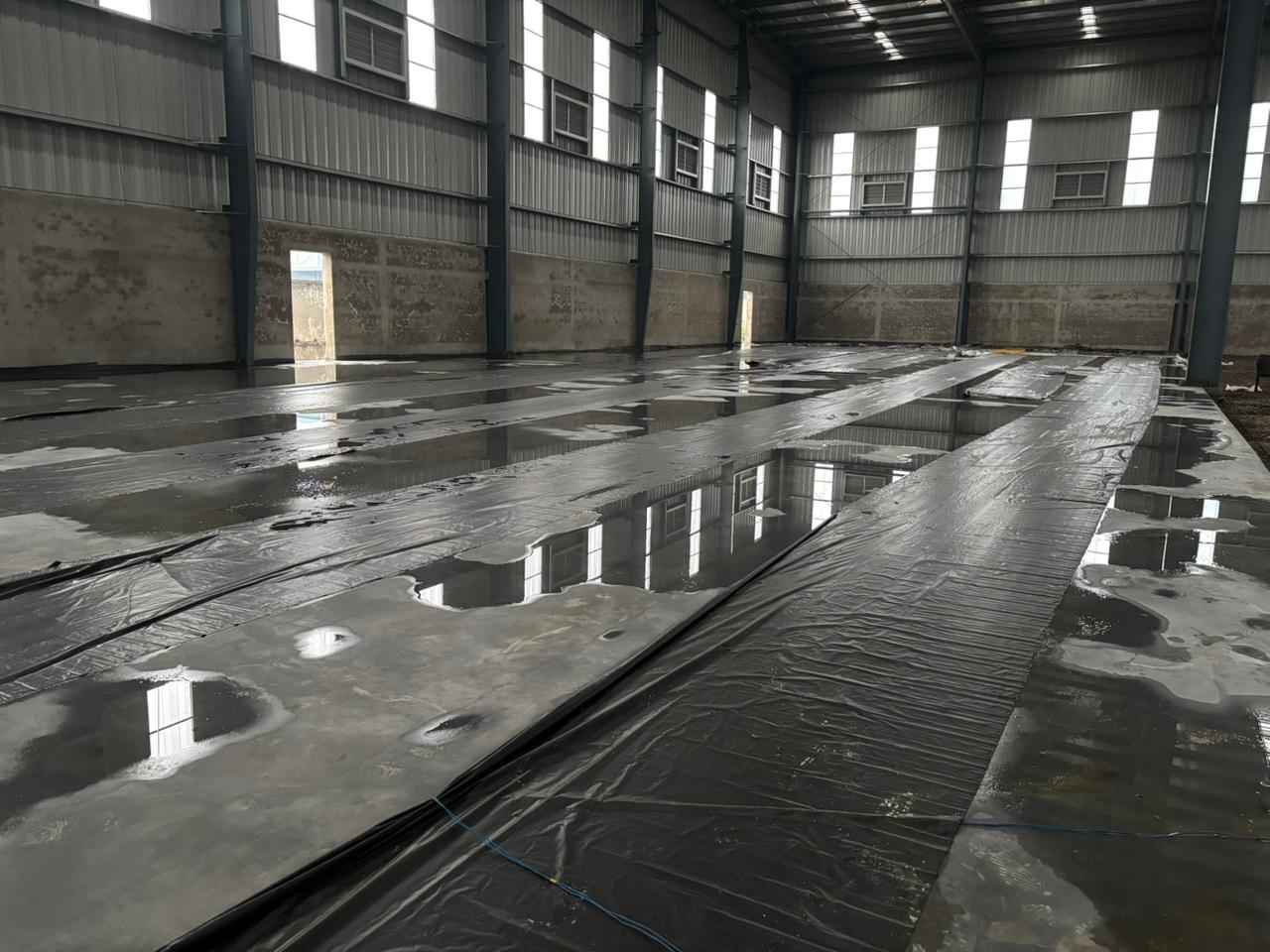Understanding the Process of Water Curing
Water curing is a fundamental process in concrete construction, critical for achieving the desired strength, durability, and longevity of concrete structures. Despite its simplicity, water curing requires careful attention to detail to ensure that the concrete develops optimal properties and meets project specifications. In this blog, we delve into the importance of water curing, its methods, and best practices for effective implementation in construction projects.

Definition Water Curing
Water curing, also known as moist curing, is the process of maintaining adequate moisture in concrete during its early stages of hydration. This ensures that the cement reacts completely with water, a chemical reaction known as hydration. Proper hydration allows the concrete to develop its intended strength and durability over time.
Why is Water Curing Important?
Concrete is a composite material composed of cement, water, aggregates, and admixtures. When cement mixes with water, hydration begins, forming a gel-like structure that binds the aggregates together. If the concrete loses moisture prematurely, the hydration process is interrupted, leading to reduced strength, surface cracks, and compromised durability. The primary benefits of water curing include:
- Enhanced Strength: Ensures complete hydration, which increases the compressive and tensile strength of the concrete.
- Crack Prevention: Reduces the risk of shrinkage cracks caused by moisture loss.
- Durability: Improves the concrete’s resistance to environmental factors such as freeze-thaw cycles and chemical attacks.
- Surface Quality: Ensures a dense and smooth surface finish, minimizing defects and imperfections.
Methods of Water Curing
Different methods of water curing are employed based on the nature of the project, environmental conditions, and type of structure. Here are some of the most common techniques:
- Ponding and Immersion
- Spraying or Fogging
- Covering with Wet Materials
- Using Curing Compounds
- Continuous Water Flow

Process of Effective Water Curing
Step 1: Preparation
- Inspect the Concrete Surface: Ensure the concrete is free from debris, dust, and contaminants that may hinder the curing process.
- Determine the Method: Choose a suitable curing method based on the project type, structure, and environmental conditions (e.g., ponding, spraying, or wet coverings).
- Gather Materials: Depending on the chosen method, gather necessary materials like sprinklers, hoses, burlap, or curing mats.
Step 2: Initial Setting Period
- Allow Initial Set: Let the concrete set and harden slightly before curing begins. Typically, water curing should start within 24 hours of placing the concrete.
- Prevent Premature Drying: During the initial set, cover the concrete with plastic sheets or damp mats to prevent moisture loss.
Step 3: Begin Water Application
- Apply Water Uniformly: For ponding, create barriers around the slab to retain water and fill the area with water to form a shallow pool. For spraying, use a hose or sprinkler to apply water evenly across the surface. For wet coverings, saturate materials like burlap or cotton mats with water and place them over the concrete surface.
- Avoid Water Pressure Damage: When spraying, ensure that the water pressure does not displace or damage the concrete surface.
Step 4: Maintain Moisture Levels
- Consistent Moisture: Keep the concrete surface consistently moist throughout the curing period.
- Check for Evaporation: In hot or windy climates, monitor the surface regularly and reapply water or re-wet the coverings as needed to prevent drying.
Step 5: Monitor the Duration
- Standard Curing Time: Water curing typically lasts 7–14 days, depending on the concrete mix, environmental conditions, and project requirements.
- Longer Curing for Strength: If high-strength concrete is required, extend the curing period to ensure complete hydration.
Step 6: Inspect the Surface
- Check for Cracks: Look for signs of drying cracks or shrinkage. Address issues by adjusting the curing method or duration.
- Ensure Saturation: Verify that the curing method is keeping all areas of the concrete uniformly saturated.
Step 7: Post-Curing Protection
- Gradual Drying: After curing, gradually reduce water application to allow the concrete to adjust to environmental conditions without sudden moisture loss.
- Surface Treatment: For exposed surfaces, consider applying sealants or coatings to enhance durability and protect against environmental factors.
Role of Ready Mix Concrete in Water Curing
The quality of concrete plays a significant role in the effectiveness of water curing. Midas Concrete Floor Solutions ensures that every batch of concrete is precisely designed to achieve optimal hydration and strength development. Our ready mix concrete products are manufactured under stringent quality controls, ensuring uniformity and consistency that support effective curing. Additionally, our range of admixtures enhances the hydration process, reducing the risk of cracking and promoting early strength gain. Whether you're working on residential, commercial, or infrastructure projects, Midas provides tailored solutions to meet your curing needs.
Conclusion Water curing is an essential process that determines the quality and durability of concrete structures. By maintaining adequate moisture during the hydration phase, construction professionals can ensure that concrete achieves its full potential in terms of strength, durability, and surface quality. At Midas, we are committed to providing high-quality concrete solutions that simplify the curing process and deliver exceptional results. Trust us to support your construction projects with innovative materials and expert guidance.
